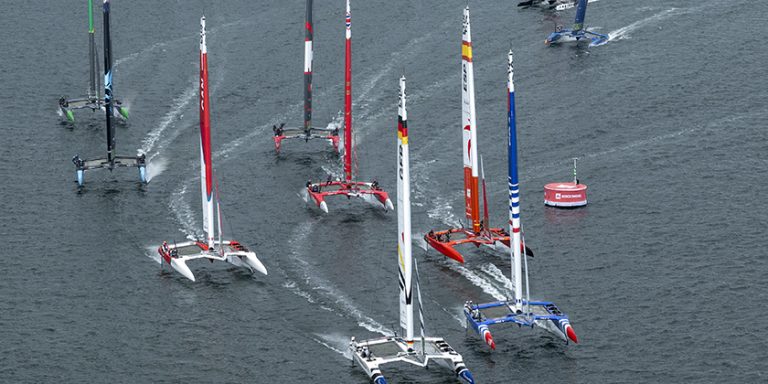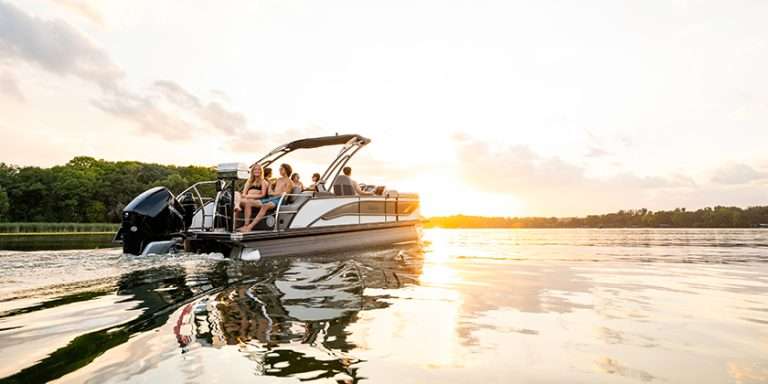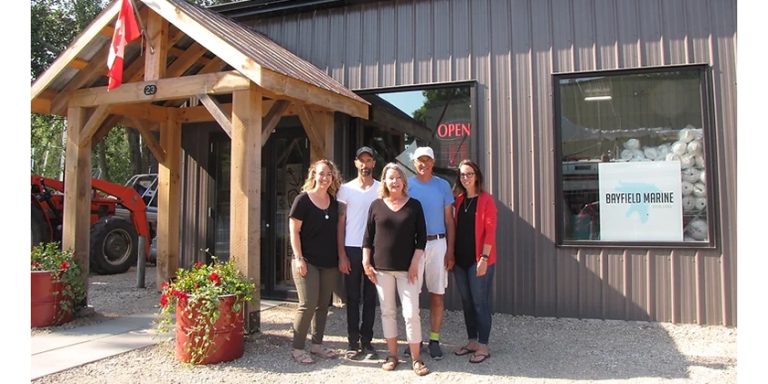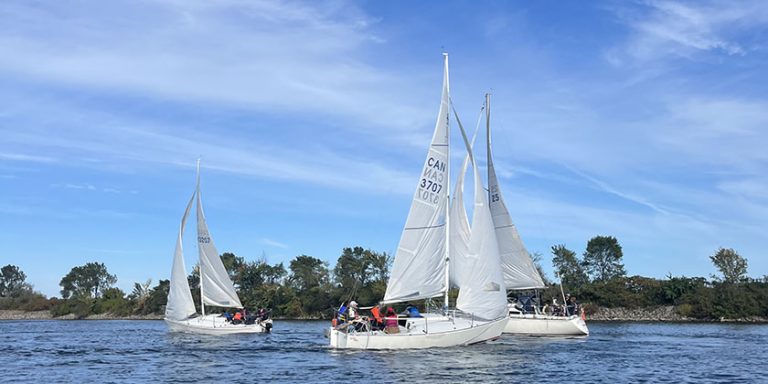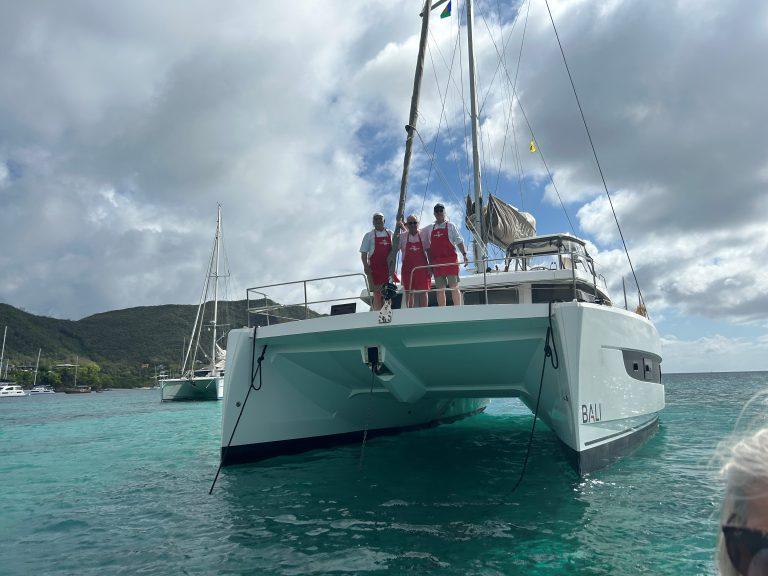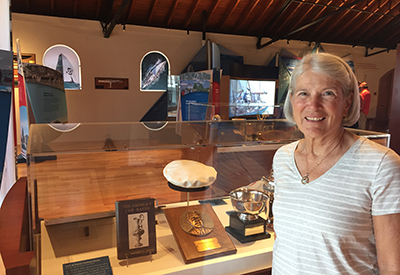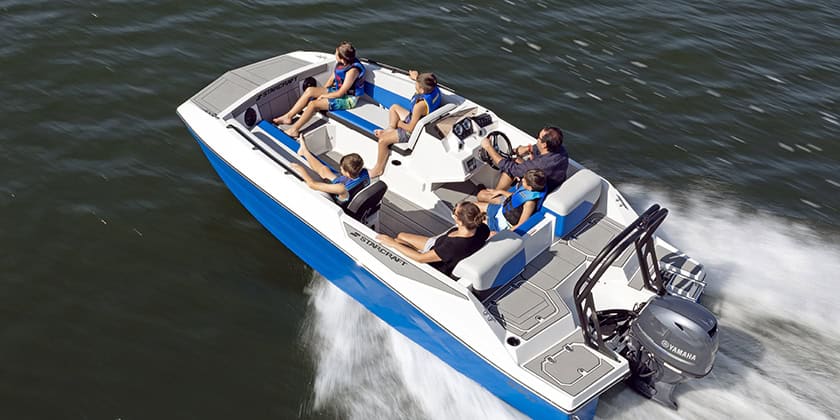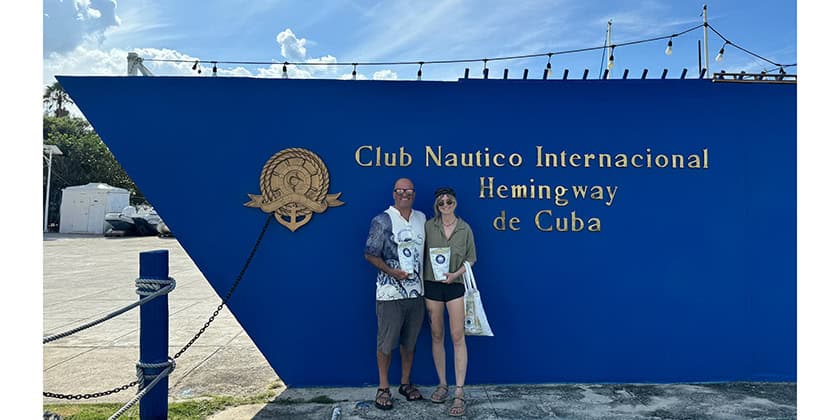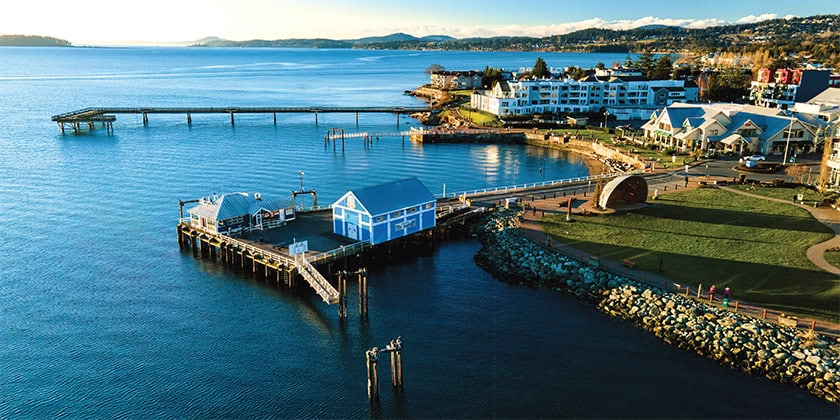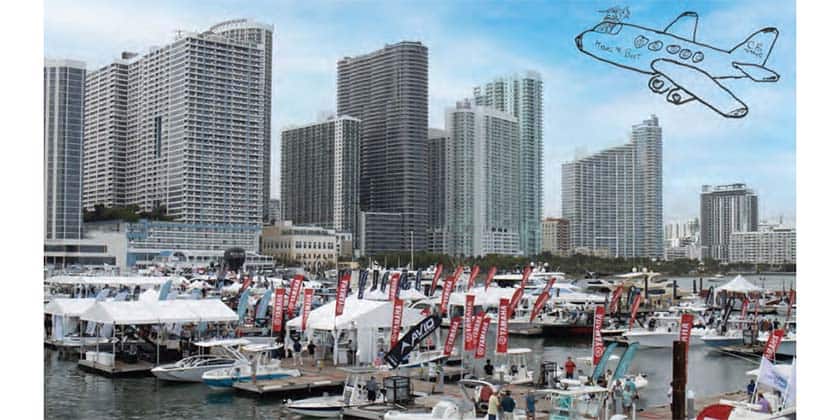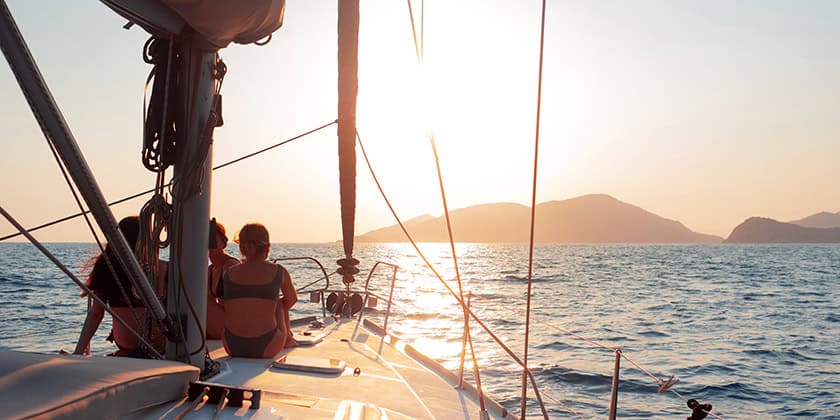Armdale Yacht Club
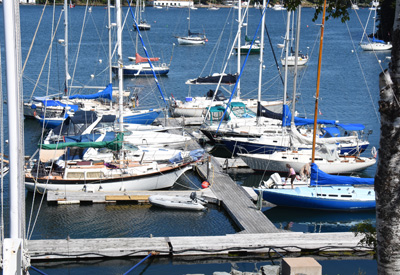
A modern day yacht club with a spooky past
Members can elect to have moorings or dock space.
By Katherine Stone
You can’t possibly pack in more national history associated with a yacht club than what you can find on Deadman’s Island in Nova Scotia. This is what Halloween legends were made of, as it was not uncommon once upon a time, to have an arm appear out of the ground in winter with the remainder of the poor skeleton not being reunited with its appendage until the spring thaw.
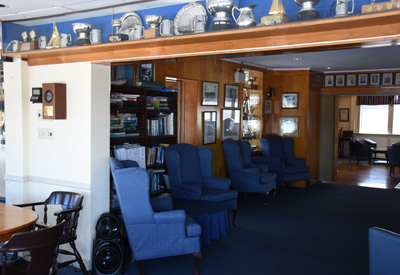 Inside the cozy clubhouse.
Inside the cozy clubhouse.
Many years after the Micmacs discovered Melville Island, the spot they called “end of the water,” the site was used for storehouses and then was purchased by the British, where a prisoner-of-war camp was built to house captives in the Napoleonic Wars and then later during the War of 1812. And, yes, there are plenty of bodies to be found on the adjacent Deadman’s Island, which was used as an unmarked burial ground for prisoners. Melville Island was later used as a receiving depot on the Underground Railroad, then as a quarantine hospital for immigrants arriving from Europe, and finally as a military prison for wayward soldiers and sailors. The islands were officially granted to Canada in 1905 and used to detain German and Austro-Hungarian nationals during the World War I in the two-storey stone prison. This was later an ammunitions depot during World War II.
The site is now the home of the Armdale Yacht Club (AYC), the second oldest yacht club in Nova Scotia, now firmly ensconced on Melville Island. Located on the southeast coast of Nova Scotia, the present day peninsula (the island is joined to the mainland by a narrow isthmus which supports Burgee Run) is on the Northwest Arm of Halifax Harbour, west of Deadman’s Island. The clubhouse is completely surrounded by dock arms, referred to by AYC as marinas, lettering from A to J, with a million dollar view of Halifax’s Northwest Arm. Originally the Arm was known as Hawks River, then Sandwich River, and finally renamed by sailors as the Northwest Arm because of its compass heading. Years ago, early settlers thought the waterway was the mouth of a river.
Current Commodore and National Administration Officer of the Canadian Power Squadron, Sarah-Jane Raine, having been around AYC since 1948, was able to retell many of the events leading up to the founding of the club. As was not unusual for the times, a group of young men met regularly at the Stoneman’sArmdale Boat House in the 1920s and paved the way for the eventual incorporation of the AYC in 1937, with membership fees set at 25 cents. At the end of World War II, some club members voiced an interest in Melville Island. After much controversy between the Department of National Defense, the Naval Sailors Association, and yacht club members, it was finally agreed that the federal government would lease Melville Island to AYC on a yearly basis. In 1956, this was re-negotiated to a 99-year lease set at $2.00 per year. The club would be responsible for maintaining all the existing buildings on the site and paying the property taxes. The property taxes include five acres of land mass and 37.9 acres under the water! Commodore Raine explained, “When the British registered the property, the title included the acres under water so that when they captured American ships and brought them into Melville Cove, they were anchored on British soil so the Americans could not confiscate them back.” To this day, the property title still denotes the underwater rights.
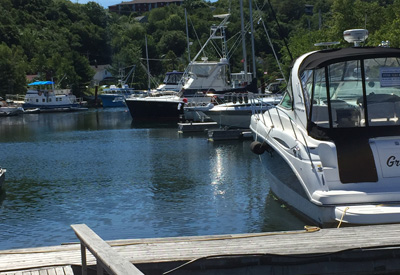 Back Basin where the larger power and sailboats dock.
Back Basin where the larger power and sailboats dock.
The original buildings have all found purpose for AYC’s members. The main clubhouse, built in 1808, was the warden’s home when the island was a prison. It sits on the highest point of the island. Over the years, there have been many additions and renovations, including a front sunroom, deck, entrance, basement, washrooms, and kitchen. It has large windows on all four sides that allow members to feel as though they are part of the Northwest Arm. The original kitchen building now houses a compressor and electrical equipment. The old coal building is now used for spar storage and sail training on the second floor. The timeworn 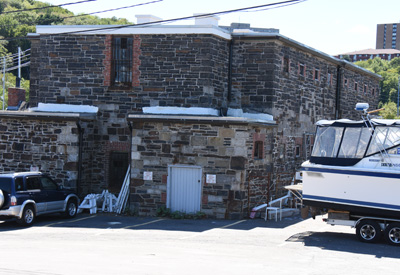 gym has been converted to a yard workshop and present day storage is now found in the ice house. Sailors are, for the most part, law-abiding citizens,so the old prison became a perfect place, with the cells intact, for members to rent as boat lockers. Sarah-Jane also recounted that, “At one time a high cement wall with broken bottles imbedded in the top went around part of the island. You can still see the broken bottles in a large portion that has remained intact, to keep the prisoners from climbing over the wall to escape.” The members are very proud of their heritage and of maintaining these National Historic Sites on both Islands. Every Memorial Day, in keeping with tradition, the United States has a ceremony complete with cannon fire on Deadman’s Island to honour the deceased.
gym has been converted to a yard workshop and present day storage is now found in the ice house. Sailors are, for the most part, law-abiding citizens,so the old prison became a perfect place, with the cells intact, for members to rent as boat lockers. Sarah-Jane also recounted that, “At one time a high cement wall with broken bottles imbedded in the top went around part of the island. You can still see the broken bottles in a large portion that has remained intact, to keep the prisoners from climbing over the wall to escape.” The members are very proud of their heritage and of maintaining these National Historic Sites on both Islands. Every Memorial Day, in keeping with tradition, the United States has a ceremony complete with cannon fire on Deadman’s Island to honour the deceased.
Original prison now used for member equipment storage
In the 1950s, most members owned small,locally made boats, including Snipes, Roue 20s, Morse dinghies, Sabots, and Bluenoses. Bluenoses became very popular when Bill Roue, an AYC member, was asked to design a small boat for inter-club racing in 1944. Construction of the boat started in 1945, and one year later 12 of them hit the water. A very large fleet is still racing today in Chester, Nova Scotia, where they were built.
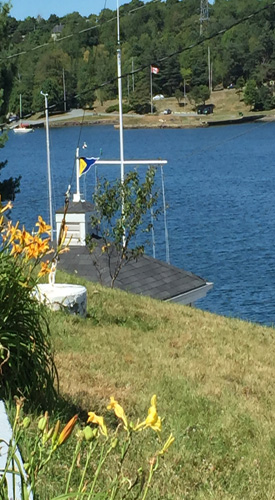 Basin where the AYC burgee proudly flies.
Basin where the AYC burgee proudly flies.
Today you will find most any type of boat, with a 50/50 split among members owning either power or sailboats. Although the interest in the junior sailing program has waned over the past few years, the adult and family learn-to-sail programs are booming. A potential sailor is able to purchase a course and arrange to take it at their convenience. This was so popular this past summer that the courses sold out in two weeks! Wednesday nights and Saturdays are for serious racing around the buoys starting from and finishing at the race house on Melville Island. To encourage “wanna-be” racers, Thursday nights have been set aside for novice-on-the-helm sailors only.
On the fun side, the annual dock party is held in June to start off the season with food offerings presented in a progressive dinner with drinks, main courses, and desserts. Participants move from quay to quay every 30 minutes at the sound of a cannon. Then there’s the Commodore’s Race and Picnic held during the last week of August. It has become a tradition that the winner of the race is always thrown overboard…they just never know when it will happen! The other big event held at the club is the annual Poker Run. Each boat is required to pick up five cards located somewhere around the harbour. After the Run, there are more fun times with a dinner and dance at the clubhouse.
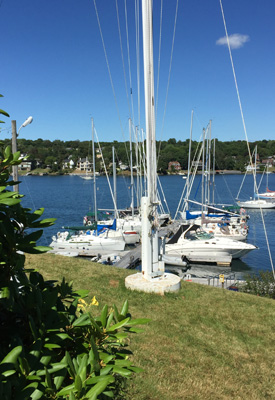
Priding themselves as a self-help club with only four paid employees, there is no work assessment because there has never been a problem getting people to help. Sarah-Jane laughs as she explains, “Anything you want to know or need help with,you get. It takes close to 30 minutes when you leave your car to get to your boat because you always have so many people to talk to that it takes forever. One day this summer, when we finally arrived at our boat, a beluga whale had decided to adopt us and hung out all day in the mooring field.”
With a catered kitchen, marine railway, small boat launch ramp, daily tender service until dusk, winter wet and dry storage, huge storage yard, gas/diesel, water/power hookups, hot showers, and ice, there are numerous services for the 230+ members year round. In a breathtaking setting coupled with historical moments and memories, AYC has no equal in Canada. Imagine if the walls of the ancient buildings, the soil upon which the soldiers trod, or the sea and ships that brought Europeans here from many lands could talk. What tales would they tell, what pieces of unknown history would be revealed,and what ghosts could be found? Make it a point to visit living history and enjoy the friendliness of this yacht club and their fascinating tales of days past.
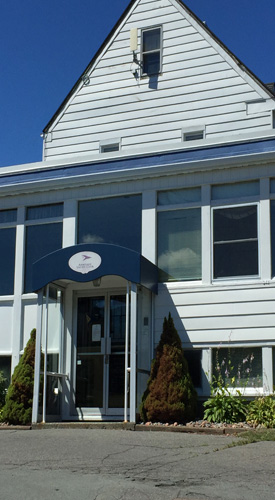 New front entrance to AYC.
New front entrance to AYC.
Armdale Yacht Club 75 Burgee Run, Halifax, Nova Scotia B3P 0C9 902-477-4617 www.armdaleyachtclub.ns.caoffice@armdaleyachtclub.ns.ca

